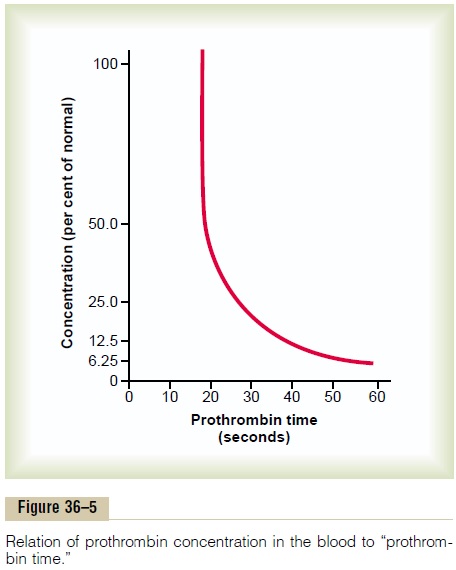Chapter: Medical Physiology: Hemostasis and Blood Coagulation
Blood Coagulation Tests
Blood Coagulation Tests
Bleeding Time
When a sharp-pointed knife is used to pierce the tip of the finger or lobe of the ear, bleeding ordinarily lasts for 1 to 6 minutes. The time depends largely on the depth of the wound and the degree of hyperemia in the finger or ear lobe at the time of the test. Lack of any one of several of the clotting factors can prolong the bleeding time, but it is especially prolonged by lack of platelets.
Clotting Time
Many methods have been devised for determining blood clotting times. The one most widely used is to collect blood in a chemically clean glass test tube and then to tip the tube back and forth about every 30 seconds until the blood has clotted. By this method, the normal clotting time is 6 to 10 minutes. Procedures using multiple test tubes have also been devised for determining clotting time more accurately.
Unfortunately, the clotting time varies widely, depending on the method used for measuring it, so it is no longer used in many clinics. Instead, measure-ments of the clotting factors themselves are made, using sophisticated chemical procedures.
Prothrombin Time
Prothrombin time gives an indication of the concen-tration of prothrombin in the blood. Figure 36–5 shows the relation of prothrombin concentration to pro-thrombin time. The method for determining pro-thrombin time is the following.

Blood removed from the patient is immediately oxalated so that none of the prothrombin can change into thrombin. Then, a large excess of calcium ion and tissue factor is quickly mixed with the oxalated blood. The excess calcium nullifies the effect of the oxalate, and the tissue factor activates the prothrombin-to-thrombin reaction by means of the extrinsic clotting pathway. The time required for coagulation to take place is known as the prothrombin time. The shortnessof the time is determined mainly by prothrombin con-centration. The normal prothrombin time is about 12 seconds. In each laboratory, a curve relating pro-thrombin concentration to prothrombin time, such as that shown in Figure 36–5, is drawn for the method used so that the prothrombin in the blood can be quan-tified.
Tests similar to that for prothrombin time have been devised to determine the quantities of other blood clotting factors. In each of these tests, excesses of calcium ions and all the other factors besides the onebeing tested are added to oxalated blood all at once.Then the time required for coagulation is determined in the same manner as for prothrombin time. If the factor being tested is deficient, the coagulation time is prolonged. The time itself can then be used to quanti-tate the concentration of the factor.
Related Topics